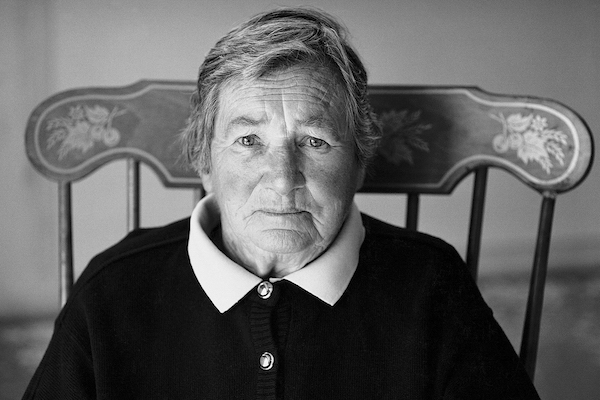AGNES MARTIN (1912-2004)
 Agnes Martin was an American-Canadian painter known for her pared-down geometric abstractions. Martin built her oeuvre around the search for sublime beauty and serenity, following her belief that “art is the concrete representation of our most subtle feelings.” Her fine-lined grids, and square blocks of pale swathes of color fused the emotional resonance of Abstract Expressionism with Minimalism’s sparse intensity.
Agnes Martin was an American-Canadian painter known for her pared-down geometric abstractions. Martin built her oeuvre around the search for sublime beauty and serenity, following her belief that “art is the concrete representation of our most subtle feelings.” Her fine-lined grids, and square blocks of pale swathes of color fused the emotional resonance of Abstract Expressionism with Minimalism’s sparse intensity.
Martin’s signature format of six by six foot square canvases, covered from edge to edge with meticulously penciled grids and finished with a thin layer of gesso was an enduring motif, influenced by the Taoist pursuit of balance and harmony. Despite the formal rigor of Martin’s practice, she was not striving for perfection—rather, she felt her art was a reflection of the patterns of nature. As a result, Martin titled many of her abstract works after natural phenomena, such as White Flower (1960) or Night Sea (1963). “Nature is like parting a curtain, you go into it. I want to draw a certain response like this,” she once stated. “My paintings are about merging, about formlessness.”
Born in 1912 on a rural farm in Macklin, Canada, she moved to New York to study art education at the Columbia University Teachers College in the 1940s. Later sharing a studio building with Ellsworth Kelly, Robert Indiana, Lenore Tawney, and others in Coenties Slip in Lower Manhattan, she became absorbed in natural phenomena while also suffering from paranoid schizophrenia. At the height of her career, Martin faced the loss of her home to new development, the sudden death of her friend and fellow artist, Ad Reinhardt, and the growing strain of mental illness; she left New York, and returned to Taos. There she abandoned painting, instead pursuing writing and meditation in isolation. Her return to painting in 1974 was marked by a subtle shift in style: no longer defined by the delicate graphite grid, her compositions displayed bolder geometric schemes—like distant relatives of her earliest works. In these late paintings, Martin evoked the warm palette of the arid desert landscape where she remained for the rest of her life.
Martin died in 2004 in Taos, NM at the age of 92. A major retrospective exhibition was held at the Guggenheim Museum in New York in 2016. Today, her works are held in the collections of the San Francisco Museum of Modern Art, the National Gallery of Art in Washington, D.C., and the Tate Gallery in London, among others.
